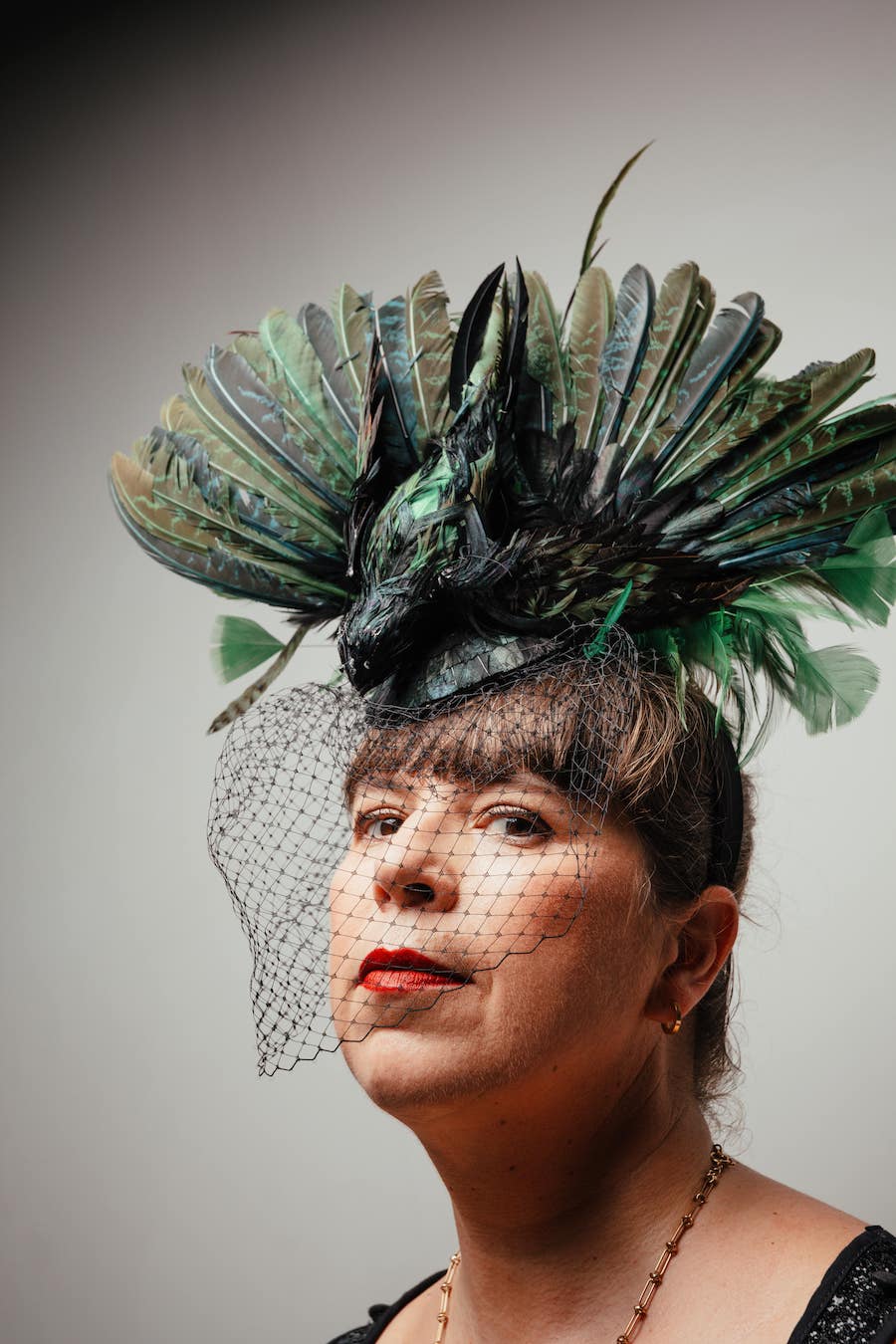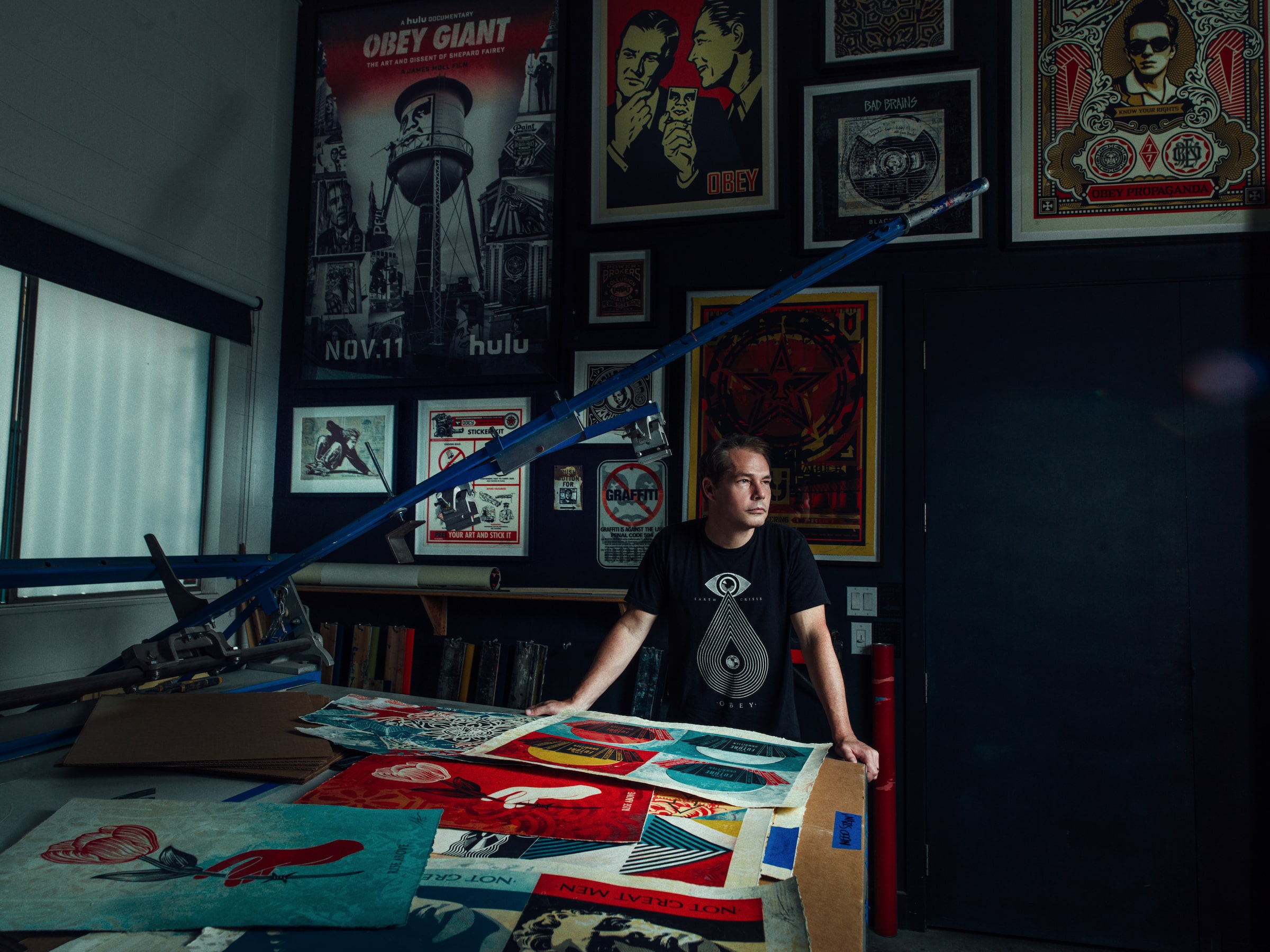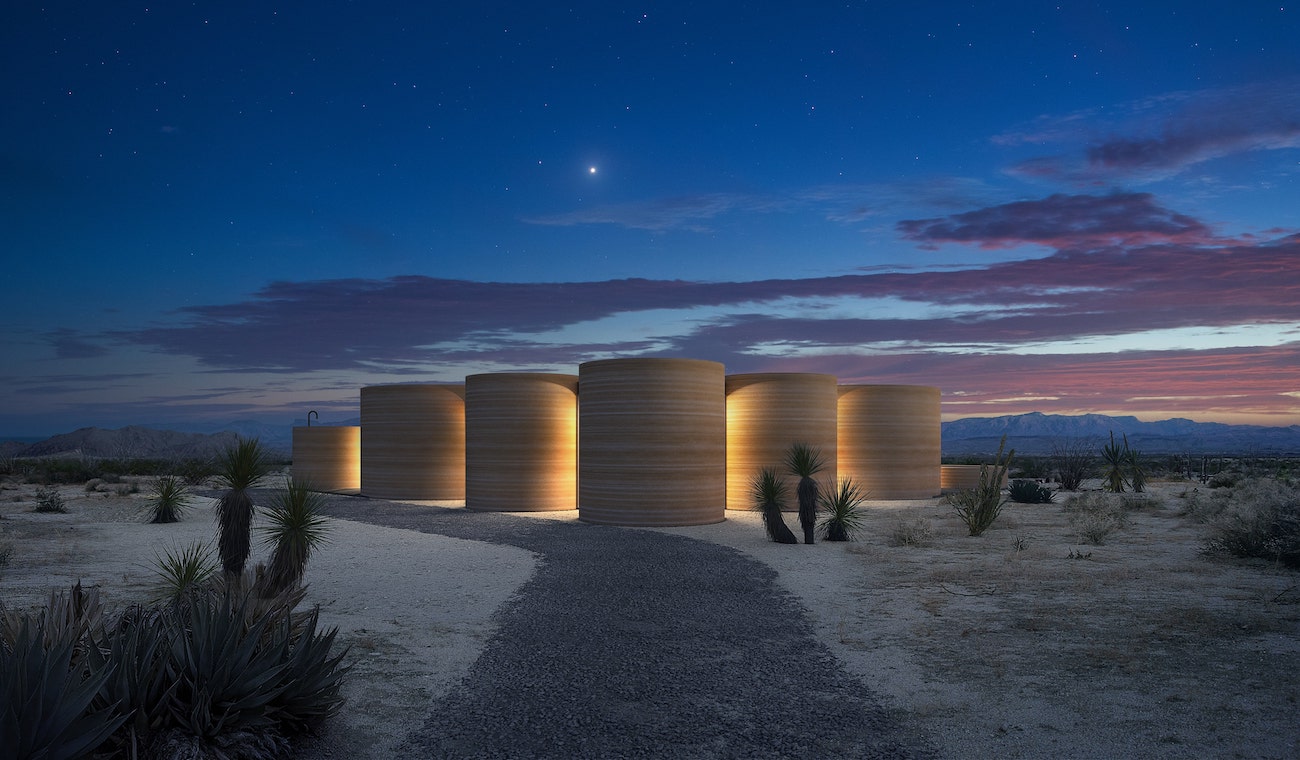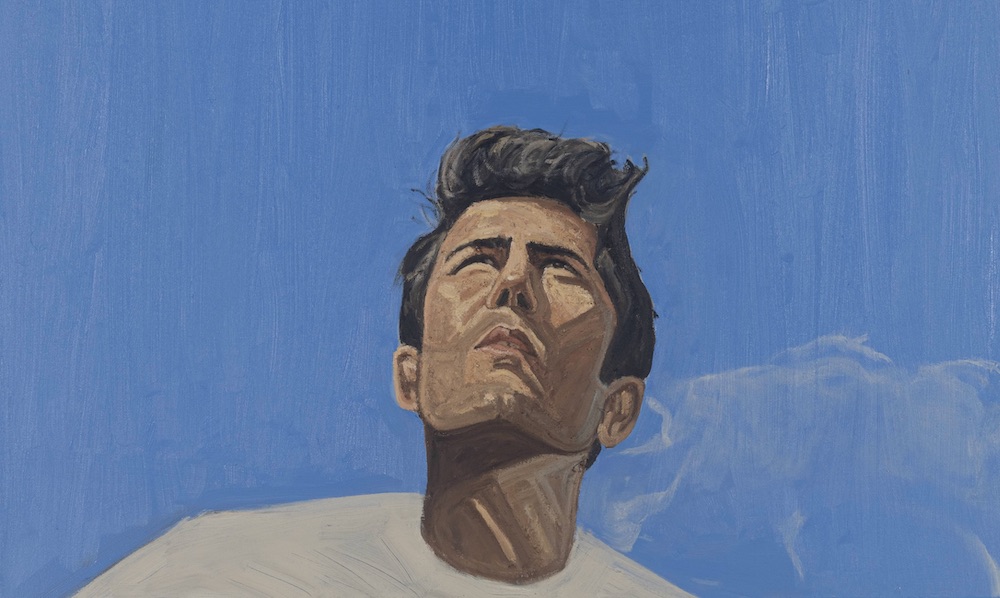Visiting Artist Joana Vasconcelos in her Lisbon Studio
For the past three decades, Joana Vasconcelos has created art that amplifies complex conditions. She addresses topics like consumerism, collective identity, tradition, and the status of women through her multifaceted visual practice, which includes sculpture, installation, drawing, film, and more. Large-scale installations—whether in museums, galleries, fashion shows, or public parks—engage with contemporary society through an accumulation of everyday objects, immersive scale, and perspective-changing environmental contexts. Her feminist viewpoint, sense of humor, eye for beauty, and quick wit also confront arbitrary boundaries drawn between art and domesticity.
Vasconcelos’s career can be traced by many firsts. In 2005, in the first Venice Biennale ever curated by women, she presented a monumental chandelier-like sculpture made of cotton tampons entitled The Bride, which marked the beginning of an ongoing series dedicated to matrimony. In 2009, she created a giant pair of stilettos made of pots and pans, named Marilyn, to comment on the inclinations and expectations of womanhood. In 2012, she became the youngest artist and only woman ever to present artwork at the Palace of Versailles. The survey show became the most-attended exhibition in France in 50 years, welcoming more than one and a half million visitors. In 2013, she represented Portugal at the 55th Venice Biennale in the exhibition’s first floating pavilion, with the work Trafaria Praia. And in 2018, Vasconcelos was the first Portuguese artist to exhibit at Guggenheim Museum Bilbao with a major retrospective, including Solitaire, a sculpture made of golden wheel rims and whiskey glasses that mimics an engagement ring.
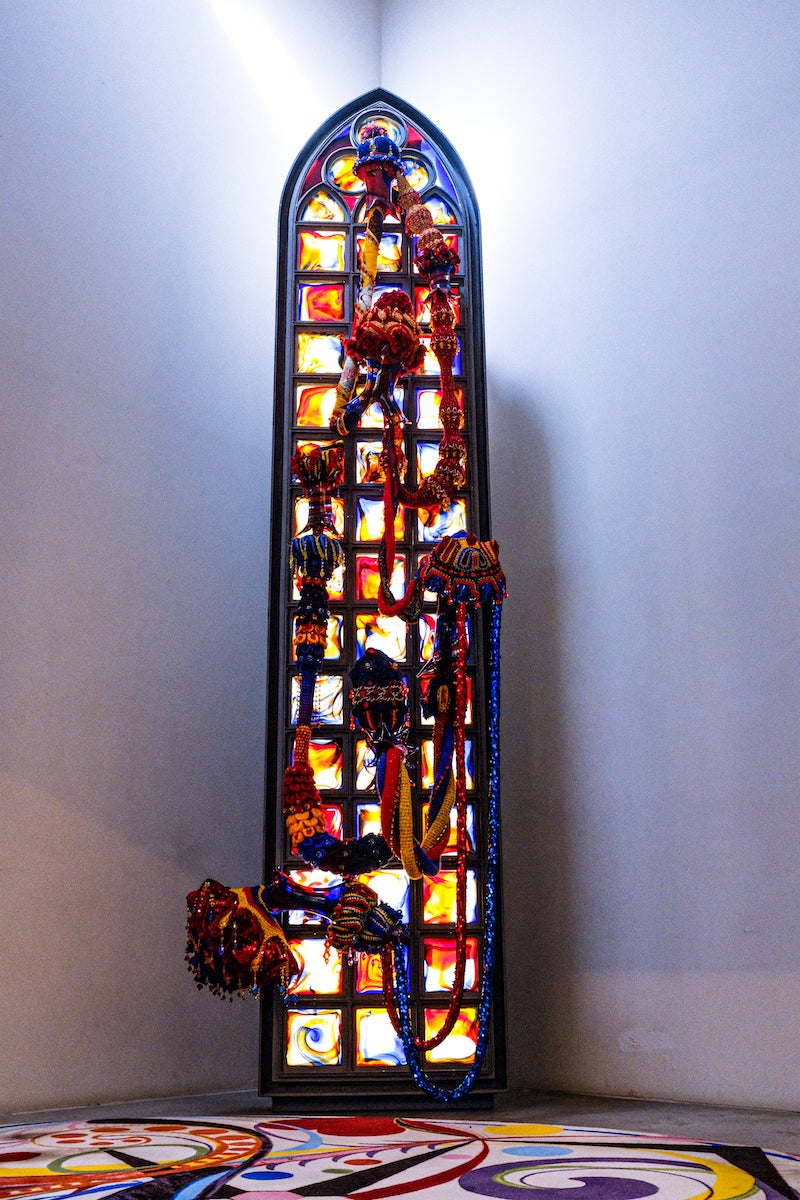
Inside Joana Vasconcelos’s studio, photo by Aurélien Caoudal.
Earlier this year in Paris, Vasconcelos collaborated with Dior’s creative director, Maria Grazia Chiuri, on the maison’s Fall/Winter 2023 collection scenography. She designed an all-encompassing world of voluminous, dazzling, detailed sculptures suspended from the ceiling in rich blues, purples, and reds, as one of her latest “Valkyrie” installations dedicated to the mythological warrior goddesses. A few months later, it made an appearance in Roche Bobois’s booth at Milan Design Week.
Around that time, Vasconcelos spoke to Whitewall from her four-floor, 32,000-square-foot workshop in Lisbon. There she was working with her team of over 50 artists and artisans—including architects, embroiderers, electricians, iron technicians, knitters, and woodworkers—to realize upcoming projects, including Tree of Life (April 28–September 3) for Sainte-Chapelle de Vincennes in Paris and Wedding Cake (June 8–October 26) for Lord Jacob Rothschild’s Waddesdon Manor in Buckinghamshire, England. Created over the past five years, the latter—an immersive, 40-foot-tall sculptural pavilion made of ceramic tiles in the shape of a wedding cake—is one of her most anticipated works to date and will join the property’s private collection.
Ahead of Wedding Cake’s unveiling and an upcoming show in Beijing, Vasconcelos shared details on making her latest creations, and how her role of reflecting society continues to grow.
WHITEWALL: You’re known for your monumental sculptures, yet your work comments on deep cultural topics. Does creating in large scale inform your starting point, or is it a result of an idea?
JOANA VASCONCELOS: It’s about the ideas. When I’m talking about a concept, I need to choose the right material and shape to talk about it. That means that to find the right shape and materials, sometimes I need to make sculptures. It’s a consequence of the concept, not a starting point. I never think I’m going to make, say, a huge shoe. But I wanted to talk about women’s conditions of today—their traditions, the present and future, how we see each other, the life of a contemporary woman—so I used a shoe to show the identity of women and then make it the shape of Marilyn Monroe’s shoe. And then I thought I needed to talk about conditions, so I added pots and pans. That was a choice. I never thought about the size or scale.
WW: Does working in large scale feel symbolic for the large-scale messages you explore?
JV: Yes. But it really depends on how you see it. If I put a shoe on a corporate floor, it becomes cold and intense. Women might say, “Oh, now I know what I’ll do with all of my pots and pans because I don’t cook!” Others would say, “I’m always in the kitchen, I hate having high heels on.” That’s what I want to talk about—how you see yourself in the present regarding the past, and the tradition of women in the house, connecting with the family. And how you see women of today and the women of the future who don’t even know how to cook. It really depends on who you are—how old you are, what your culture is, and what you do for a living. If you choose to be a housewife and a mom, you’ll understand the shoe in a certain way. If you choose not to have children and be a workaholic, you’ll see it in a different way.
“It’s interesting to look upon things with a glimpse of joy and happiness and criticism at the same time.” —Joana Vasconcelos
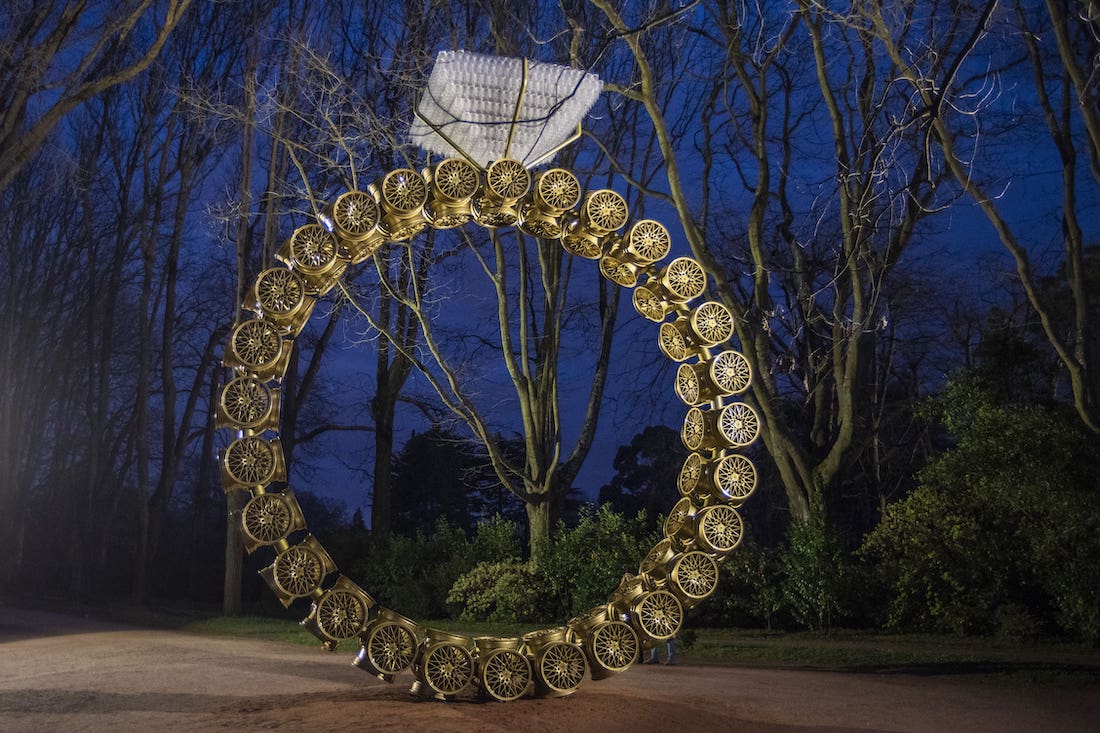
Joana Vasconcelos, “Solitaire,” 2019, photo by Joaquim Norte de Sousa for Atelier Joana Vasconcelos.
WW: Your work incorporates everyday objects with a sense of irony and humor. Why is this tone important in communicating serious themes?
JV: It’s interesting to look upon things with a glimpse of joy and happiness and criticism at the same time. You can do it positively, while challenging people. In a way, high heels may make you ask, “What is that for? Why do these exist?” You can be critical of many things, and you can do it in a bad way, but I choose to do that in a positive way.
WW: As a woman, do you feel you have a responsibility or an expectation in the arts?
JV: I do. It’s true that through my life, I’ve been placed as the “first” woman to do something. That means something. Many times, I’ve asked myself why I was put in that situation, why a woman couldn’t get there before me. Suddenly, it felt I was asking that question too many times. Then, I understood that many women before me didn’t get the same chances, the same budgets, the same recognition for their work as I did. It put me in a unique place, where I had to ask myself, “What kind of crazy world do we live in where women weren’t seen until I could be seen?” That says a lot about how the world is still not equal for women.
WW: Your work bridges domestic environments and public spaces while exploring topics related to womanhood, including matrimony. Why is this something you’ve been interested in exploring over the years?
JV: One of the most important moments in a woman’s life is the wedding. It’s a defining moment for many, so I decided to create the symbols of that passage—the wedding dress (The Bride), the wedding ring (Solitaire), and now the wedding cake (Wedding Cake). So, what does this all mean? Tradition, contemporaneity? Sexual freedom for women? Power? Perfection? Happiness? What do you project in your marriage for the rest of the life? These are symbols that you need to think about and place them in the right direction of the present—not the past, not the future. Defining moments need a certain criticism to be honest and true, and to be honest with yourself and the person you’ll marry.
WW: Wedding Cake was commissioned by the Rothschild Foundation for Waddesdon Manor, and it was nearly five years in the making. Can you tell us about this?
JV: This was a project connected to many others—connected to those in Venice, Versailles, and Spain. When they approached me, I said I still had the wedding cake to make but had not found the right collector, so they said, “Let’s make the cake!” This is a big project because it’s not a small sculpture. This is a four-floor sculpture. It’s a building; it’s a temple. It’s a ceramic sculpture with a lot of layers. In the beginning, you may have an idea, but when you start designing and building it, it’s also important to have the right collector or client to make it for. The manor is a wonderful place, and they have a great sculpture and ceramic collection, and they wanted me to be a part of that. At the same time, they also have weddings going on! So it’s a piece that matches a lot of dimensions. It has been quite a challenge because it was completely done in ceramic tiles.
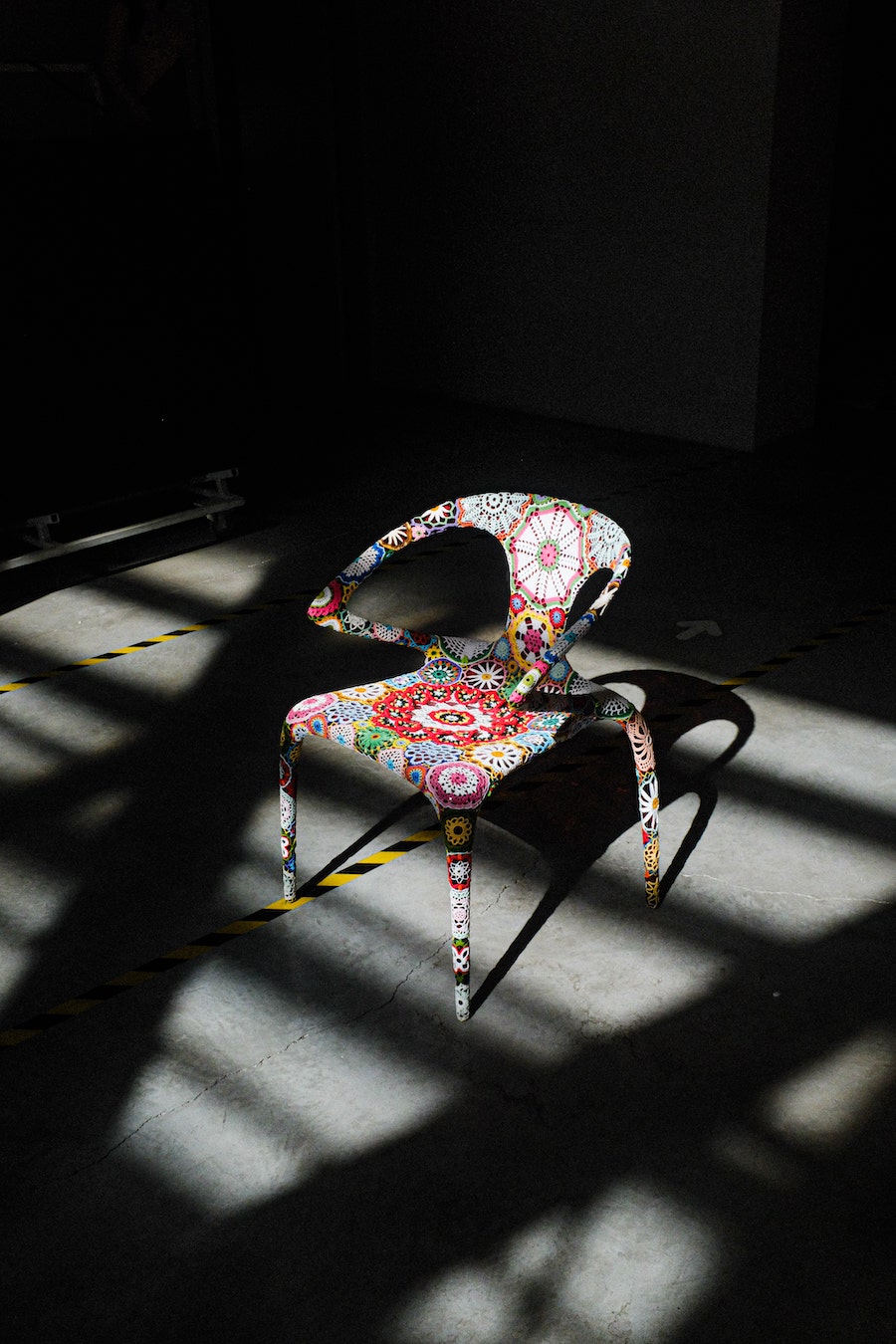
Inside Joana Vasconcelos’s studio, photo by Aurélien Caoudal.
WW: Wedding Cake is interactive, inviting visitors to climb its interior. How did you design it with this element in mind?
JV: You can walk up to the first and second floors, and then when you get to the top of the third level, you become the bride and groom of the wedding cake. On the third level, you only have two stairs that give you access to the top. If you go through one, someone else may go through the other. It may be someone that’s your choice, it may not be. There may be an encounter at the top with two women, maybe two men, maybe two people who don’t know each other or do. It can also be a place where people get engaged, renew their vows, or get married. It puts into perspective the idea of a wedding, as it is in tradition. Because contemporarily, we can look at marriage in a completely different way than in the past. For instance, instead of a bride and groom, we have gay people that can be married; we could have two brides or two grooms. Instead of just talking about it, we’re making it happen—physically. That was the proposal, to put people into perspective about that.
Today, online sites where people meet each other play a big role. I thought, “Oh! My wedding cake can be a kind of encounter for those that didn’t know each other before, too. They can find themselves here—at the top of a wedding cake.”
WW: The piece is inspired by the Baroque buildings and decorative ceramic traditions of Lisbon, where you live and work. How did this inform the piece?
JV: Lisbon, and Portugal in general, has tiles all over buildings’ facades, inside the buildings, everywhere. And Baroque was invented here. So the wedding cake is completely covered in tiles. It looks like a wedding cake from afar, but up close, you can tell it’s covered in ceramic tiles, which, as a ceramic object, gives it preciousness and value. At the same time, it looks like a Baroque object because it puts together a lot of elements that don’t belong to the same period of time, the same conceptual background, but together they play with this wild world that doesn’t exist. So it’s inspired by the Baroque spirit and the tiles tradition. Also, with the colors of contemporary cakes today, because wedding cakes today have bright colors, which I chose to be a part of the cake. The first round is green, the second is blue, the third is yellow and pink, and then the last is completely yellow. There are pastel colors that are common with the wedding cakes today.
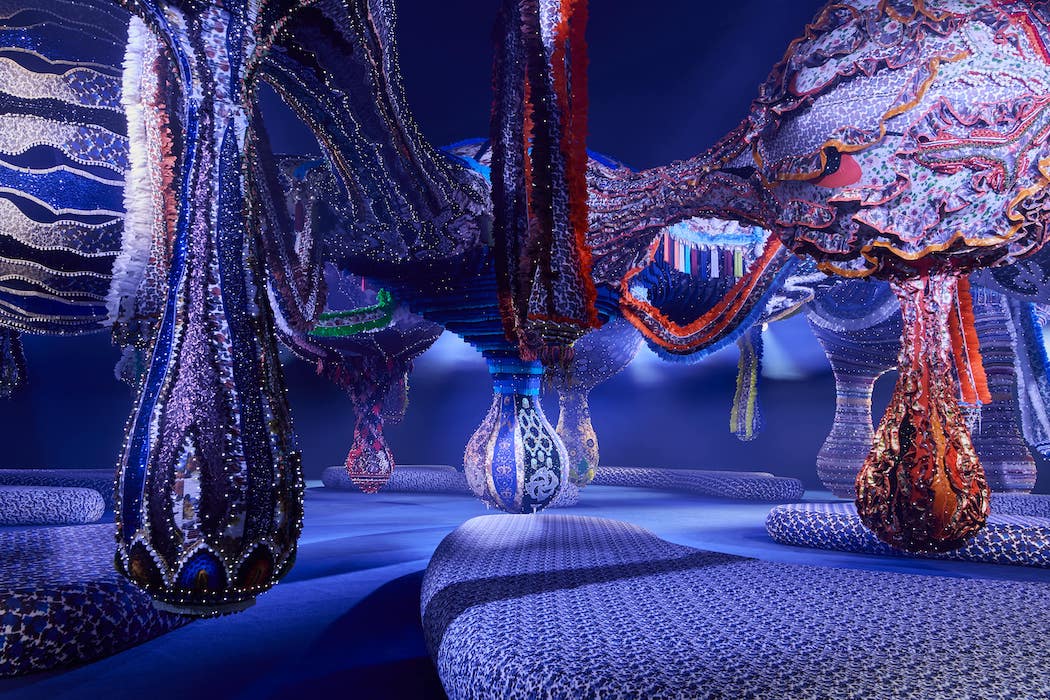
Atmosphere for Dior’s Fall/Winter 2023-24 fashion show, featuring Valkyrie Miss Dior by Joana Vasconcelos, photo by Adrian Dirand, courtesy of Dior.
“We wanted to pay homage to the first women who started Dior with Christian Dior,” said Joana Vasconcelos of her collaboration with Maria Grazia Chiuri.
WW: You recently collaborated with Dior for its Fall/Winter 2023 show setting, which was interactive, gaining inspiration from Valkyries—goddesses of Norse mythology, which you’ve explored before. What was your starting point?
JV: Maria Grazia [Chiuri] and I wanted to pay homage to women, and we started talking about Catherine Dior, who was the sister of Christian Dior. She went on the last train to the concentration camp during the Second World War, and when she came back, she helped her brother start his business. All of the Miss Dior perfumes are done in her homage, in addition to other floral details, because all she ever wanted was to be a florist. So she opened a shop. But she was a part of the journey of the beginning of Dior, and she was proud of that journey. So we wanted to pay homage to the first women who started Dior with Christian Dior.
I’ve been doing the “Valkyries” for a while all over the world, so it’s always nice to bring alive these memories. In the Norse tradition, they fly over the battlefields and save the warriors. The idea of bringing alive a second chance, or giving value to the brave ones, is very interesting to me—and all done by female goddesses, which is common in any tradition around the world. Goddesses can be common, but warrior goddesses—like Valkyries—are very rare. In a way, it’s to bring people’s attention to that. Through many ways, we can value people—their work, their knowledge, and through fashion or craft or anything. The Valkyries are the concept behind that for me.
WW: The sculpture was interactive, created for the runway with models walking through and around it. What did it feel like to have your work temporarily activated in a fashion setting?
JV: It was an incredible moment, I’d have to say. Very intense. It was the first time that they gave me the opportunity to do it all—the whole setting. The floor, the seating. I worked with amazing teams of light and sound designers that emitted the feeling. Everyone was amazing. And the fact that everyone was amazing, and the quality was so amazing, made that moment quite unique. Then, of course, the fashion show was incredible, too. Seeing all these beautiful women going around the piece, activating the piece in this unique way, was amazing. Typically, in the contemporary art world with the museums, visitors go around it in a random way. It’s not choreographed. But here it was, and they were moving in a certain way around and under the piece, creating a sort of a dance with good music and good lighting. Everything was perfect.
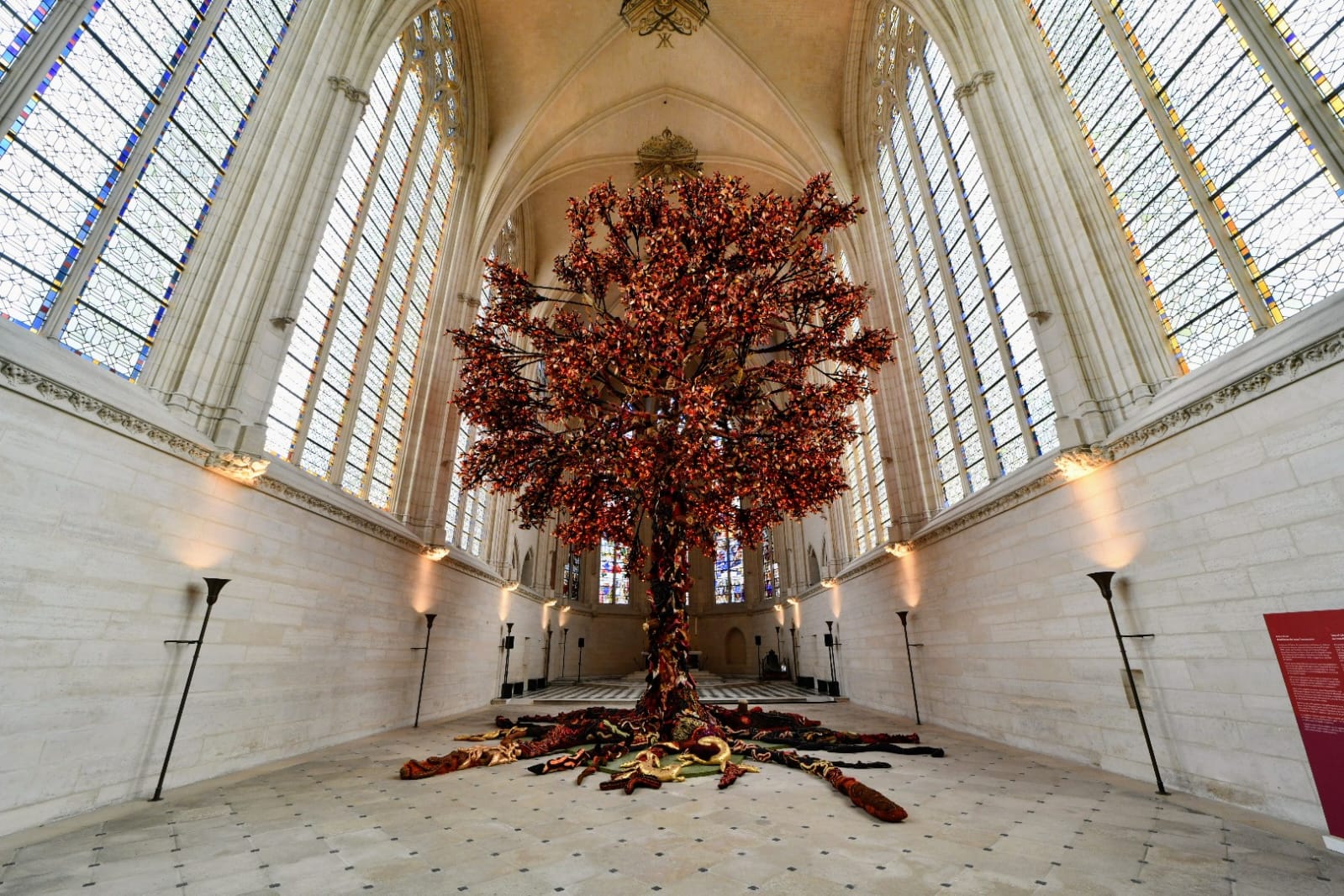
Joana Vasconcelos, “Tree of Life,” 2023, © Didier Plowy for Centre des Monuments Nacionaux.
WW: In April, you presented a site-specific installation named Tree of Life at Sainte-Chapelle de Vincennes in Paris, inspired by Gian Lorenzo Bernini’s masterpiece Apollo and Daphne. It showed 100,000 handmade textile leaves embroidered with a traditional Portuguese technique. How does being from Portugal—inspired by its art or the traditional techniques found there, such as paintwork on tile—impact this sculpture?
JV: This sculpture started in the Borghese Gallery, where they have Daphne. Daphne doesn’t want to marry Apollo, but Apollo wants to marry her. She asked her father to run away from Apollo—and she said she’d rather transform into a tree than marry Apollo. So the sculpture is Daphne transforming into a tree. In a way, I made the tree that Daphne transforms into, but it then became a bigger project that now represents new beginnings. It was made during confinement when my team went home and we didn’t have much to do. We spent two years embroidering its leaves. The truth is that it’s a result of this unique moment in history, where all of these people with great hands and knowledge had nothing to do. We took advantage of that, and now it’s the piece we will always remember that was made during COVID. Tree of Lifeis much more than Daphne, and much more than a tree—it has meaning. Itmeans you need to believe in the future and believe in renewal.
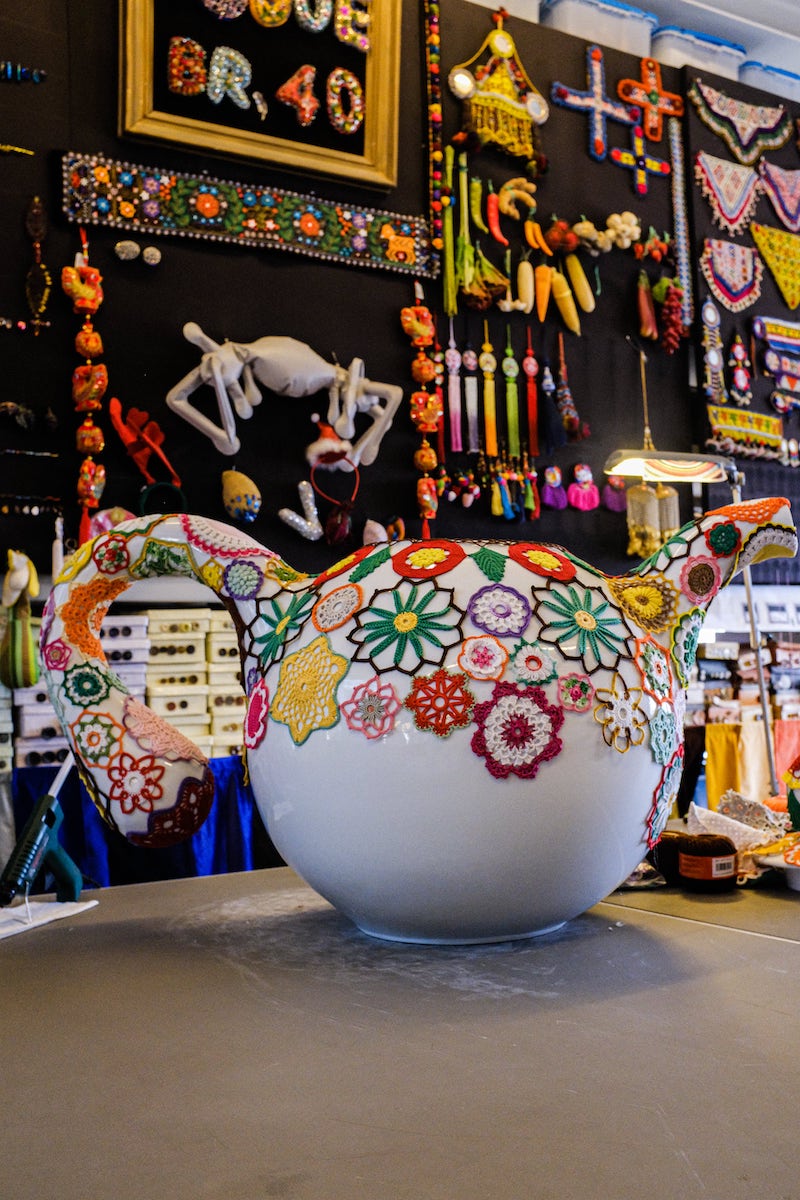
Inside Joana Vasconcelos’s studio, photo by Aurélien Caoudal.
WW: Can you tell us about your latest show at Tang Contemporary Art gallery in Beijing?
JV: This is my first solo show in China. I’m going to present different parts of my work—Valkyrie works, some crochet paintings, some domestic solo works. I’ve brought a large range so that I could show to the Chinese community who I am as an artist. There will be small-, medium-, and large-scale works, so they can get to know me.
WW: You’ve created a handful of record-breaking exhibitions around the globe—including several as the first woman. Has your idea of what you’re presenting or why changed to consider its impact? Will it?
JV: I will think the same. Every time I am invited to do something, I must do my best and reflect the world that I live in—and where I come from, who I am, and how I think about the present. Artists play a role of showing to others what we think about the world. We are like an X-ray of society. Through us, information can be shared with each other, and can give others the perspective of, “Where is the world going? What is happening in the world?” We are a group of people selected by the others to reflect what society has become. I feel quite privileged to be part of that group of people to show others what’s happening in society. It’s an important role. And if we had more women doing that, with other perspectives and other ways at looking into society, we’d have a better X-ray than before.
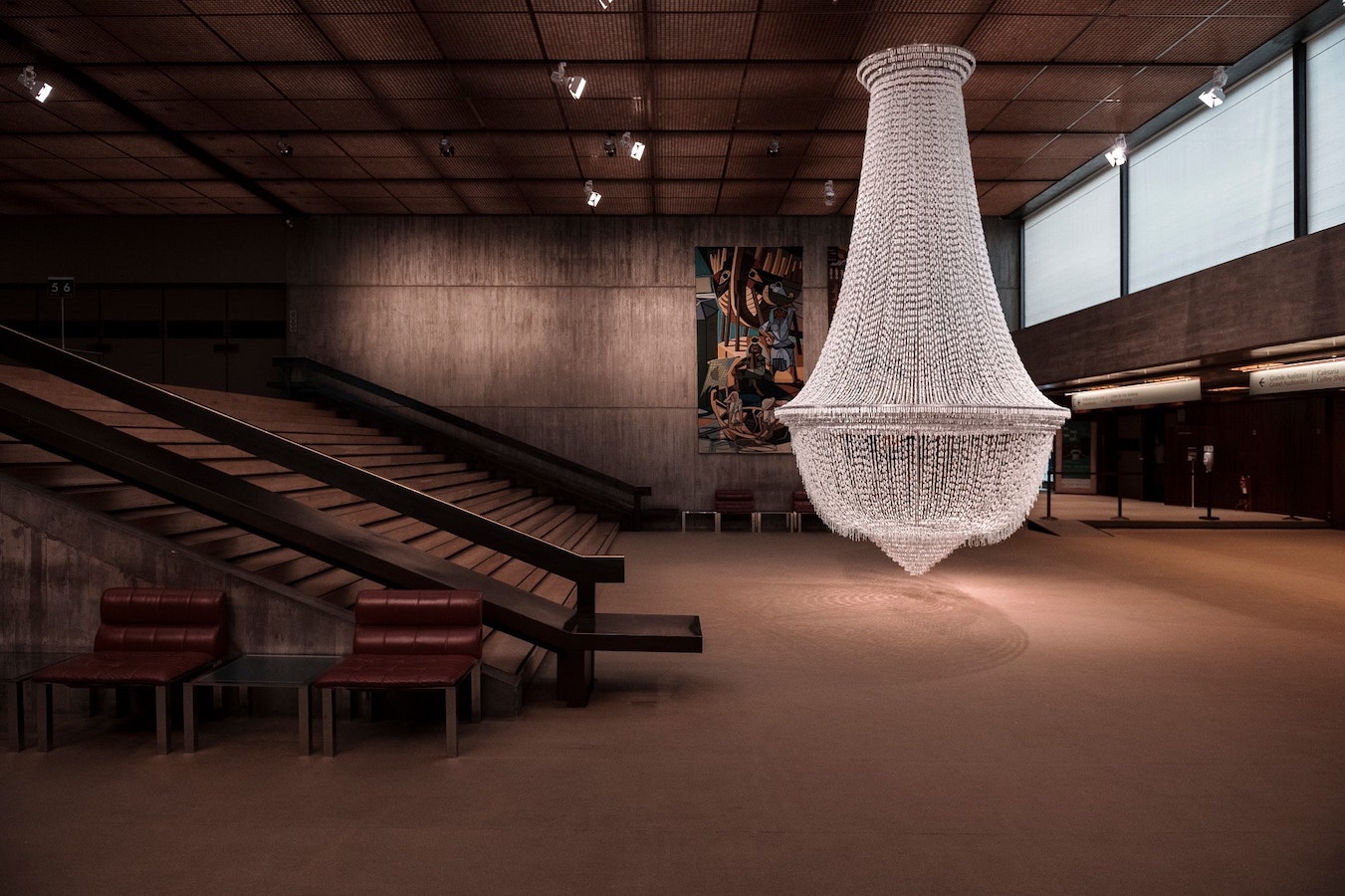
Joana Vasconcelos, “A Noiva,” 2001-2005, photo by Pedro Pina, courtesy of Calouste Gulbenkian Foundation.



